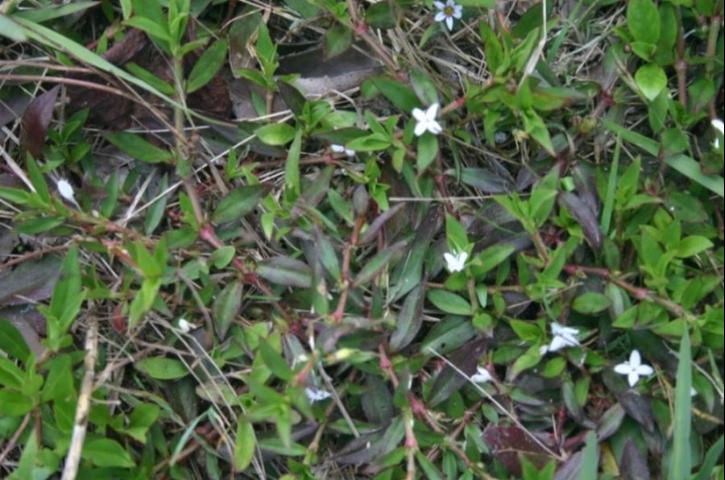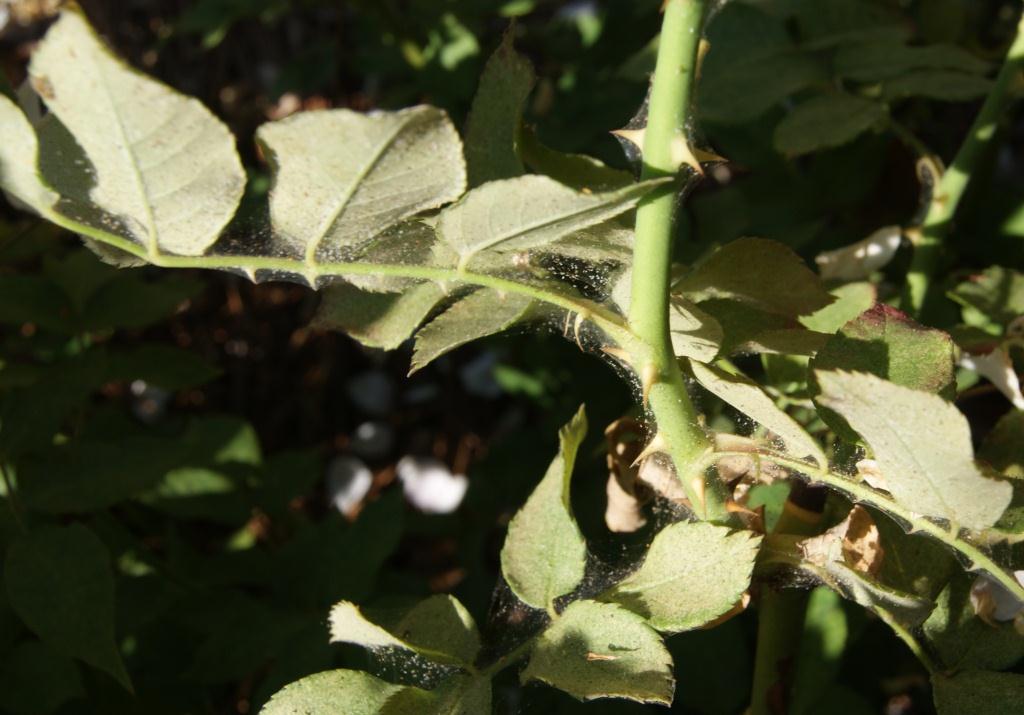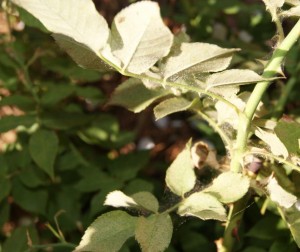
by Carrie Stevenson | Oct 20, 2015
Contrary to popular belief, stormwater runoff—not industrial discharge—is the primary source of water pollution in Florida. During a rain, anything on the ground can be picked up, carried via water, and taken downstream to the nearest body of water. While newer construction projects require stormwater treatment (including detention ponds or newer techniques such as pervious pavement and biofiltration), the infrastructure in older coastal communities often pipes rainwater directly into local creeks, bayous, and bays.
A large storm drain empties into Pensacola Bay. Photo Credits: Carrie T. Stevenson, IFAS Extension
Pollutants contained in stormwater vary greatly in type and potential for damage. E. coli and fecal coliform bacteria from pet waste and septic tanks frequently cause closures of local swimming holes due to high bacteria counts. Heavy metals from car exhaust, along with oil and grease from roads and parking lots can contaminate fish. Litter from yards, roadsides, and coastal areas can trap, injure, or kill wildlife. Nitrogen and phosphorus from excess fertilization and organic debris can result in water bodies with oxygen deprivation, algae blooms, and in worst case scenarios, fish kills. Even sediment and clay from dirt roads, eroding property, and construction sites can end up downstream, filling in creek bottoms or seagrass beds.
When creeks are filled with sediment, the small invertebrates that make up the bottom of the food chain are smothered, while turbidity (cloudy water resulting from sediment particles) and sedimentation in grass beds reduces the amount of sunlight reaching the grasses and prevents growth.

Pervious pavement allows rainwater to filter into the soil instead of running over parking lots. Photo Credits: Christopher J. Martinez, UF Agriculture and Biological Engineering.
The most difficult aspect of preventing stormwater pollution, also referred to as “non-point source” pollution, is that it doesn’t come from a single source but is the result of numerous cumulative impacts. However, there are many ways that individuals can reduce their unintentional contribution to this problem. When it’s time to fertilize plants, read and follow the label, and if you have questions, contact an extension agent to make sure you understand the proper amount to apply. If you live on a dirt road that crosses a creek, encourage your neighbors to agree to having it paved—many county projects are held up by a handful of homeowners who don’t see the benefits to having a rural road paved. Be sure to clean up pet waste, and if you’re on a septic system and have the capability to convert to sewer treatment, take advantage of that option.
While it can seem that these minor changes can’t make a big difference, there is much evidence to the contrary. The US Environmental Protection Agency recently recognized the success of a Florida community that took assertive stormwater pollution prevention measures. As a result of their actions, a polluted water body, Roberts Bay (Sarasota) was removed from the state’s list of impaired waters.
http://water.epa.gov/polwaste/nps/success319/fl_roberts.cfm
by | May 10, 2012

Robert C Trawick
Extension Horticulturist II
Jackson County
rob.trawick@ufl.edu
In May we move from the warm days and cool nights of spring and early summer to the hot days and warm nights that will be with us until, at the very least, September.
With the increasing heat, you’ll inevitably notice the decline of your cool-season bedding plants. After months of outstanding bloom, plants such as pansies, dianthus, alyssum, snapdragons and petunias are growing tired and unattractive.
But that’s OK. This change brings the opportunity to redesign and replant flower beds with bedding plants that will thrive during the hot summer season.
Don’t allow plantings of cool-season bedding plants to go too far down the road to oblivion before you decide to pull them out and replace them. Beds of colorful flowers are meant to be noticed and appreciated, and they generally are located in prominent spots in the landscape. A few lingering flowers in an otherwise disheveled bed will not contribute anything positive to your landscape’s appearance.
Once you have decided the time is right to replant, there are a few decisions you should make before you head out to the nursery.
Note the amount of light the bed receives; this is critical in selecting the right bedding plants for the area. The terms full sun (8 hours or more of direct sun), part sun (about 6 hours of direct sun), part shade (about 4 hours of direct sun), shade (about 2 hours of direct sun) and full shade (little or no direct sun) are used to distinguish various light conditions. Even bedding plants for shade generally will not do well in full shade, but fortunately areas of full shade are not terribly common in most landscapes.
Look at the size of the area to be planted, and try to estimate how many plants will need to be purchased. On average, bedding plants are spaced about 8 inches apart. Keep a record of how many plants are used in a bed from one season to the next to make this process simpler. Also, consider desired heights of the plants you will use.
Decide on a color scheme. It’s crazy that gardeners who take the time to choose which colors to combine when they get dressed will grab anything in bloom at the nursery and plant those things together in a flower bed. No one can tell you what colors you should use in your flowerbeds – you know what you like. The point is to think about it and consider which colors you think will look good together. Generally, avoid purchasing bedding plants in cell packs of mixed colors so you have control over which colors you will combine.
Prepare your beds carefully before putting in the summer bedding plants. A common mistake is to remove the faded plants, half-heartedly turn the soil and then plant the new plants. We must give back to the soil if we expect each new planting of bedding plants to do their best.
To prepare the bed, first remove any weeds or other unwanted plants from the bed. Use a herbicide, such as glyphosate, or dig them out by hand. Turn the soil to a depth of at least 8 inches. Spread a 2-inch to 4-inch layer of compost, rotted leaves, aged manure, finely ground pine bark or peat moss over the bed. Then evenly sprinkle a light application of a granular all-purpose fertilizer. Or use your favorite organic fertilizers. Thoroughly blend the organic matter and fertilizer into the bed, rake smooth and you’re ready to plant.
Of course, make sure you plant the transplants into the bed no deeper than they were growing in their original container.
Bedding plants are commonly purchased in cell packs and 4-inch pots, but these days you can even find them offered in gallon containers (for those who have the budget to indulge in instant gratification).
Transplants in cell packs are the most economical and if planted this early in the season, they have plenty of time to grow and produce spectacular results. For larger transplants, choose 4-inch pots, but expect to pay several times more per plant. Sometimes it’s worth it, especially for tender perennials grown as annuals, such as pentas, blue daze and lantana, which generally are offered only in 4-inch or larger pots.
Tender perennials grown as annuals are especially good for the summer flower garden. They have the stamina to last reliably from now until October or November – when you can replace them with cool-season bedding plants.
Warm-season bedding plants, as well as tender perennials that can be used as warm-season bedding plants, for sun to part sun include abelmoschus, ageratum, amaranthus, balsam, blue daze, celosia, cleome, coleus (sun-tolerant types), coreopsis, cosmos, dahlberg daisy, Dusty Miller, gaillardia, gomphrena, lantana, lisianthus, marigold, melampodium, narrow-leaf zinnia, ornamental pepper, periwinkle, pentas, portulaca, purslane, rudbeckia, salvia, scaevola, sunflower, tithonia, torenia, verbena (hardy perennial) and zinnia.
Some of the warm-season bedding plants and tender perennials for part-shade to shade are balsam, begonia, browallia, caladium (perennial tuber), cleome, coleus, impatiens, pentas, salvia and torenia.
by | May 10, 2012

Eddie Powell
Extension Horticultural Courtesy Agent I
Walton County
pep5@ufl.edu
With spring in full swing many Florida homeowners are gearing up to grow their own vegetables. The most frequently asked question this time of year is, “why do I need to fertilize my soil?” The answer is simple – – not all nutrients are present in the right amounts to support good plant health. North Florida is a prime example of an area lacking certain nutrients, since the soils in this area are generally infertile and acidic. Therefore, ample amounts of lime and fertilizer must be applied to the soil for adequate plant growth. If this is not done then the crops will suffer from inadequate plant growth and food supply.
Most vegetable crops grow and perform best at a pH range, 6.0-7.0. A soil sample must be taken to determine soil pH. Feel free to bring one of those samples by your local University of Florida Extension office for your soils pH results. Now if the pH extends far below or above this range, then crop productivity will be significantly reduced. This happens because the crop cannot utilize the fertilizer properly. In other words, this causes the plant to use too much of some nutrients (like manganese, zinc, and iron) that are required in very small amounts and too little of some nutrients (like nitrogen, phosphorus, and potassium) that are required in larger amounts. The plant system becomes upset so to speak and does not function well and some plants may even die.
To avoid having your crop suffer because of a lack of fertilizer, contact your local University of Florida Extension Agent and ask he/she to help you select the best kind of fertilizer for your crop. After you have selected the correct fertilizer, make sure to ask your agent to assist you with following: to figure the correct amount to be applied to the area where you plan to grow your vegetable crops and also how to apply the fertilizer to the soil so that your plants will use it properly for an excellent crop yield.
Things to remember:
To keep your soil pH range between 6.0 -7.0 so that your crop can uptake the fertilizer properly and make sure to apply the correct amounts of fertilizer to the soil so that your plants will not suffer but produce high quality produce.
by | May 10, 2012

Larry Williams
UF/IFAS Extension Agent
Okaloosa County
lwilliams@co.okaloosa.fl.us
Virginia buttonweed (Diodia virginiana) is a difficult-to-control lawn weed. Factors that result in this weed being difficult to control include the following.
- It is a perennial plant native to the Southeastern United States.
- Spreads by seeds produced above or below ground, broken stems or roots.
- Its seed float and water helps spread the weed.
- It prefers moist areas and often is first found in low areas of the lawn. If not removed, the weed will spread.
- Clippings from mowing or weedeating can establish into mature plants.
- It can form dense mats in established turf.
- It can tolerate mowing heights as low as ½ inch.
- Hand removal is often ineffective because stem or root fragments left behind can produce additional plants.
- Premergence herbicides provide poor control due to vegetative reproduction.
- Effective postemergence herbicides are few and are poorly available for home use.

Virginia Buttonweed in Flower (Image Courtesy of Larry Williams and UF/IFAS)
The first line of defense in controlling Virginia buttonweed is to make sure your lawn is irrigated on an as needed basis. You’ll find it difficult or impossible to control this weed if you water on a frequent schedule (every day, every other day, every third day). An established lawn does not need or benefit from a frequent, shallow irrigation schedule. Read the UF/IFAS Extension publications “Let Your Lawn Tell You When to Water” and “How to Calibrate Your Sprinkler System,” available online at http://hort.ifas.ufl.edu/yourfloridalawn or from your County Extension Office. Postemergence herbicides containing carfentrazone can provide good control of Virginia buttonweed when used correctly. Spot treat areas where Virginia buttonweed first shows up to avoid having to treat larger areas of the lawn. Carfentrazone can be used on all of our warm-season lawn grasses and is found in herbicide products for home use such as Fertilome Weed Free Zone, Ortho® Weed-B-Gon Max® and the professional use product Quicksilver™. Repeat applications may be required as regrowth of Virginia buttonweed occurs. Follow label directions and precautions when using any pesticide, including herbicides.

by Matthew Orwat | May 10, 2012

Spider mites and thier "webbing" on a Blush Noisette Rose. Photo Credits: Matthew J. Orwat
Spring is rapidly turning into an early summer. As heat increases so will the incidence of spider mites on ornamental shrubs.
The first indicating factor of damage is a yellow mottling on the leaves of the plant, which is caused by the piercing and sucking mouthparts of the spider mite. As they feed they damage leaf tissue, eventually disfiguring the leaves and causing complete abscission. Additionally, fine webbing will be noticed on the stems and leaves on which the mites will lay their eggs. Although the most obvious damage to the plant is disfigurement, this leaf damage weakens the plant and may lead to eventual death of plants already weakened by other insects or diseases.
Scouting and rapid action is necessary to prevent spider mite damage, since the spider mite life cycle ranges from 5-20 days. The optimum temperature for development of spider mite infestations is 80 ° F.
Spraying broad spectrum insecticides might seem like a good solution, but these insecticides will eliminate the numerous natural predatory insect species which feed on spider mites. The popular insecticide, Carbaryl, has been shown to actually increase mite populations in some studies. One simple, non-toxic solution for spider mite control is to use a forceful stream of water to wash off spider mites and their web-like structures. This would need to be carefully performed to reach all affected parts of the plant, particularly the undersides of the leaves. Repeating this process several times will achieve reasonable mite control. Additional low-toxicity methods include the application of insecticidal soaps and high grade horticultural oils. These need to be applied carefully, since application of these products in high temperatures can damage certain shrub species. Please consult your labels carefully.
As a last resort, if insecticides are needed, the most narrow-spectrum product possible needs to be selected. It is also advisable to rotate insecticides, since mites are known to develop resistance to a particular product when used alone.
For a table of available miticides or to learn more please cosult “Selected Miticide Use for Ornamantal Plants” and “Twospotted Spider Mite”
Submitted by Matthew J. Orwat, Washington County Horticulture Extension Agent

Spider mite leaf damage on a Blush Noisette Rose. Photo Credits: Matthew J. Orwat

Spider mites and thier "webbing" on a Blush Noisette Rose. Photo Credits: Matthew J. Orwat
by | Mar 12, 2012
Escambia County
Garden Talks: Attracting Butterflies and Wildlife to the Landscape. Escambia County Master Gardeners will share information on plants and techniques that help homeowners create their own wildlife habitat at home. Programs held on Friday April 13 and Saturday, April 14 at the Escambia County Demonstration Garden, 3740 Stefani Road. Participants must preregister by calling 850-475-5230 or emailing bbolles@ufl.edu. Pick one of the days.
Spring Garden Festival and Plant Sale. Join Escambia Extension and the Master Gardeners for a morning of gardening demonstrations and a plant sale on Satuday, May 5 from 8:00 – Noon at 3740 Stefani Road.
Santa Rosa County
March 17: Love Your Lawn. Discover how to use Florida-friendly environmental practices to create a manageable lawn. This 2-hour workshop will offer ideas on watering, fertilization, pest control, and other practices to help you manage and enjoy your lawn. The workshop is scheduled from 9 A.M to 11 A.M at the SRC Extension Office, 6263 Dogwood Drive, Milton, FL. It will be presented by Theresa Friday, Extension Faculty–Environmental Horticulture, UF/IFAS Santa Rosa County Extension, and is sponsored by the Santa Rosa County Master Gardeners. The cost is $10 and advance registration is suggested. Go to http://www.eventbrite.com/event/2961731619 or call 850.623.3868; costs will be collected at the door.
April 14: Guided Tours of the Milton Gardens. On Saturday, during the 15th annual Emerald Coast Flower & Garden Festival, (April 13, 14, & 15, 2012.), Santa Rosa County Master Gardeners, Ann Jeffcoat and Sally Menk will provide guided tours in the Milton gardens. The festival vendors sell a huge selection of annual and perennial plants, shrubs and trees, houseplants, wind chimes, flower pots, fertilizers, lawn and garden supplies as well as food and beverages vendors. ‘Gardening Grannies’ drive golf carts up to the vendors’ booths to pick you up and take you and your purchases to your vehicle. If you have gardening questions, ask one of the S.R. Co. Master Gardeners or the various vendors for answers to your questions all 3 days of the festival. Look for our Master Gardener Tour Guides in the Gardens on Saturday, April 14th, 2012.
May 14: Variegation: Natures Great Mistakes. Horticulturist, Tina Tuttle will present surprising and educational information on plant variegation with some of her slipped in humor here and there at the UF Milton Gardens beginning at 10am. Ms. Tuttle has written a series of programs for the Garden Clubs of Florida that includes both the instructors and students guidelines. She has taught and judged horticulture across America.









